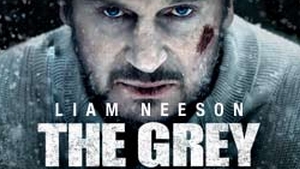
Editor’s Note: Go,See,Talk presents this review of The Grey from our staff writer Andrew Crump (of A Constant Visual Feast.) Have a look at what he had to say about Joe Carnahan’s tense survival flick and offer your thoughts below.
Ten years after the release of Narc, Joe Carnahan has returned to where he started as a filmmaker with survival thriller The Grey, eschewing hyper-stylized shoot-outs and outrageous, impossible action scenes for something grim, grounded, and surprisingly poetic. While a film set in the Alaskan wilds feels like a far cry from a gritty urban tale of narcotics investigations, The Grey shares far more in common with Narc than Carnahan’s recent outings, studio tent-pole hopeful The A-Team and the Tarantino-influenced Smokin’ Aces. The Grey occurs in our world, where nature is unapologetic for its amorality and disasters cannot be averted through guile or in tanks outfitted with parachutes. It’s a film about survival whose narrative focuses on the emotional wounds of men bereft of hope and separated from their families for too long.
And it’s an early contender for the honor of “most thrilling film of the year”. The Grey begins with Ottway (Liam Neeson), 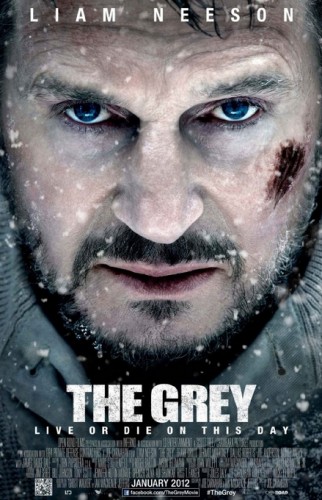 an ex-military type working security for a team of oil drillers at the end of the world in Alaska. He’s not protecting men from men, but from wolves, who see the humans as intruders in their natural territory. Quickly enough, Ottway and the crew are all placed on a plane together heading home. Fate has other ideas, though, and their aircraft crashes in spectacularly frenetic fashion, leaving just the grizzled Irishman and six other men battered but alive on the state’s harsh arctic plains. Cold proves to be the least of their worries; before long, the survivors find themselves targeted by a pack of hostile wolves, and Darwin’s philosophy takes hold.
an ex-military type working security for a team of oil drillers at the end of the world in Alaska. He’s not protecting men from men, but from wolves, who see the humans as intruders in their natural territory. Quickly enough, Ottway and the crew are all placed on a plane together heading home. Fate has other ideas, though, and their aircraft crashes in spectacularly frenetic fashion, leaving just the grizzled Irishman and six other men battered but alive on the state’s harsh arctic plains. Cold proves to be the least of their worries; before long, the survivors find themselves targeted by a pack of hostile wolves, and Darwin’s philosophy takes hold.
For me, The Grey is a film about adjustment of expectations; not content to simply be another Liam Neeson action movie, it exists as a blend of pulse-pounding thrills and evocative artfulness. Advertising has dressed Carnahan’s story up to resemble “Taken with wolves”, likely in the hopes of capitalizing on that film’s success and Neeson’s recent penchant for playing professional tough guys. But where Pierre Morel’s film exists on the outskirts of reality, The Grey stoically and insistently remains tethered to it. Machismo is present here, housed largely in Neeson’s performance, but he’s not an unstoppable killing machine. Just a man– a heartbroken, disillusioned, vulnerable man. Maybe landing in the middle of an Alaskan blizzard with voracious carnivores lurking in the dark does that to a person.
We learn this about Ottway pretty swiftly. He’s an experienced sharpshooter, and knows more about survival and disaster scenarios than the other remaining members of the drilling team, but he also knows that the wolves outmatch them all and their best hope lies in avoiding the beasts altogether. When Carnahan couples that revelation with the establishment of clear, present danger in the pack’s kill tactics– arguably more sophisticated than those of men– our preconceived notions about the picture go right out the window. Nobody’s safe anywhere at anytime. And once that’s made painfully, shockingly certain, Carnahan’s campaign to induce unease and increase heart rates begins in earnest. As he ratchets up the stakes and the tension incrementally, scene after scene, there’s a sense that he’s grinning at us from behind the camera, a bit of a wolf himself.
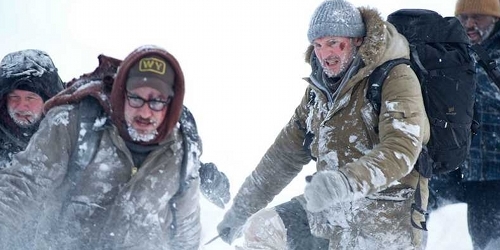
It’s harrowing stuff. Carnahan’s clear intention is to put you on edge, and judged on that criteria alone The Grey can be called successful. Rare are the times when The Grey lets up and allows for its participants– its characters and its viewers– to regain their composure and catch their breath. That’s the point of the film; it exists primarily in the milieu of an action survival picture, and Carnahan knows how to thrill without growing repetitive. No one scene feels like it’s retreading sequences from earlier in the film. There’s variety here, in the face-offs the band of survivors have with their lupine attackers and in the natural obstacles impeding our protagonists on their trek to civilization. Carnahan mines as much excitement and nerve-wracking suspense from a perilous shuffle across a deep ravine as he does from the characters’ encounters with the wolves, combining both hectic and steady camerawork and absolutely outstanding sound mixing to draw us inextricably into each scene.
But all of this tense, anxiety-inducing cinema serves the ancillary purpose of leading its beleaguered drilling team to individual catharses about faith, the people they love, and their mortality. I wouldn’t call The Grey a spiritual film by any stretch of the means, but it’s certainly about degrees of spirituality and, more accurately, belief (which itself isn’t a strictly spiritual concept). And all of these higher pursuits are heavily cushioned by the threat of the wolf pack and the survivors’ ever-increasing need for shelter and sustenance, comprising quiet character beats amid the film’s rising sense of desperation– which nonetheless resonate deeply throughout the plot’s entirety, to the effect of becoming as much a part of the film’s reason for being as its action. The thematic contrast struck between the film’s examination of the existential, the physical, and the instinctive is both deeply moving and thoroughly unexpected, which puts The Grey in a league of its own.
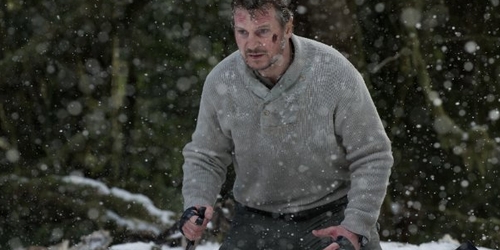
Neeson stands at the center of the film, and for the most part we’re presented with his thoughts and feelings exclusively. Eventually, the other characters– a motley assortment whose greatest concerns range from missing their children to fretting over their last sexual encounter– open up as well, yet the narrative always circles back to Ottway, whom we meet as he plans his suicide before abandoning the attempt and soldiering on. Through luminous flashbacks and the narration of a letter, we learn that he’s separated from his wife, and though the particulars of their division aren’t apparent at first, he’s nonetheless struggling to live even before the plane crashes. The character feels familiar– like Bryan Mills, he’s lost something and he wants it back– but Ottway’s denied any semblance of nigh-superhuman capabilities. Neeson foremost plays him as a man sick with longing. It’s hard not to wonder how much inspiration the actor drew from the experience of losing his own wife, Natasha Richardson, three years ago; Neeson’s exposed and susceptible here, and for all his stronger attributes it’s those qualities that most clearly define him.
G-S-T RULING:
I didn’t expect that I’d be calling The Grey a powerful film. And I won’t say that it’s not the sort of fare that can’t be enjoyed purely on its visceral pleasures. Make no mistake, this is a film that will shake your core and leave you gripping the armrests on your seat; Carnahan cultivates dread with ease and knows how to spring on his audiences for maximum effect. For that alone, The Grey is worth a ticket. But it’s the emotional payoffs that really make it into something special and lasting; as the characters confront their circumstances and discover how far they’ll go to make it home alive, so do we.


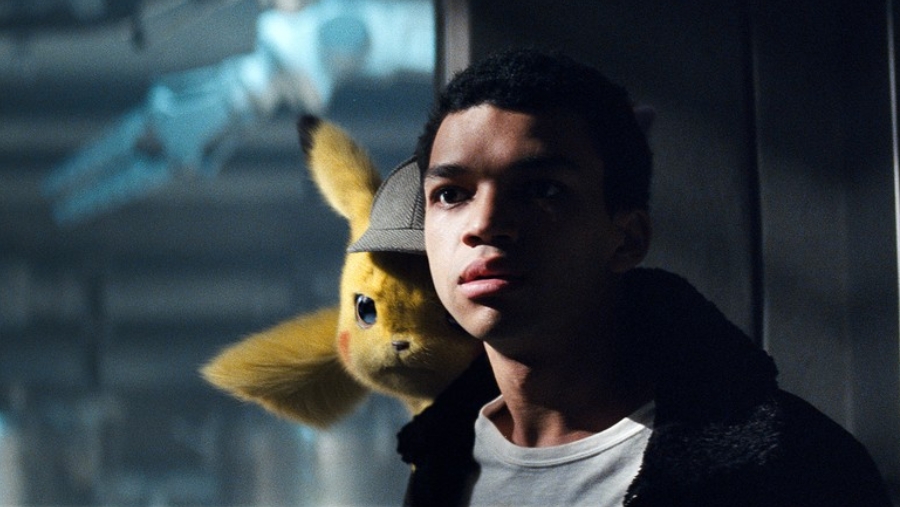
6 Comments
Grady May
I didn’t have a chance to catch the advanced screening of the film. So, I went to see The Grey over the weekend. After initially seeing the trailer, I wondered if it was going to be the BIG SCREEN version of LOST, with snow. I had a feeling it was going to be a good movie, but I wasn’t completely sold at the time. Once I had a chance to see the film I was sold. Great movie…great review.
Andrew
Thanks a lot Grady. Interestingly, my first impressions of the film based on the synopsis were kind of low, even with Neeson and Carnahan involved. It took the first trailer for me to turn around my perspective, and man, I’m glad I did.
MarcC
Love that you hi-light Carnahan’s attempts to ground the film to a human level with equally misfit and fractured Neeson leading the way. Also it was refreshing to see the scares weren’t repeated. But I think your line “Nobody’s safe anywhere it anytime” really sums up the story and how effective that theme is in making this deeper and more substantive than just another survival story. Amazing write up Andrew!
You stay til the end of the credits?:P
Andrew
I had no idea the post-credits scene existed until much later on. Truth be told, I’m not too fussed over missing it. Tacking something that’s essential to the narrative on after the credits feels cheap and stinks of studio interference. If that moment is a necessary part of the climax, then it should come up before the credits roll. If that had happened, I wouldn’t have complained.
Thanks for the kind words, Marc!
MarcC
Well I have more qualms with the marketing than I do the decision to put something more or less essential at the end. But that’s talk for another time:P
star
Well, The Grey was very anti God. It seems like they could have used a good english dictionary for new words. The movie was full of profanity, very bleak story line. It seems like they were trying to show the world that they were angry with God… Remember, life and death is in the hands of Almighty God… Even if you believe or don’t believe in God. There is a God and He has all the power.. we will all die one day and WE WILL ALL FACE THAT GOD…. SO PONDER ON THIS….